 W
WThe Admiralty Island cuscus or Manus Island spotted cuscus is a species of marsupial in the family Phalangeridae. It is endemic to the Admiralty Islands of Papua New Guinea. It is the smallest member of the genus Spilocuscus, and the female has a black back, while the male has blackish spots on a white background. Both genders have rufous heads.
 W
WThe Angolan kusimanse, also known as Ansorge's kusimanse, is a species of small mongoose. There are two recognized subspecies: C. a. ansorgei, found in Angola; and C. a. nigricolor, found in DR Congo, which do not have overlapping ranges. It prefers rainforest type habitat, and avoids regions inhabited by humans. It grows to 12–18 inches in length, with a 6–10 inch long tail, and weighs 1–3 lb. Little is known about this species of kusimanse, and there are no estimates of its wild population numbers or status. Until 1984, the species was only known from two specimens from Baringa but are now thought to be quite common in some regions. Threats are probably habitat loss and bushmeat hunting. However, this species is protected by Salonga National Park.
 W
WAnoa, also known as dwarf buffalo and sapiutan, are a subgenus of Bubalus comprising two species endemic to the island of Sulawesi in Indonesia: the mountain anoa and the lowland anoa. Both live in undisturbed rainforest and are similar in appearance to miniature water buffalo, weighing 150–300 kg (330–660 lb).
 W
WThe Bolivian red howler is a species of howler monkey, a type of New World monkey, endemic to Bolivia. It can be found in rain forests, including riverine and seasonally flooded forests.
 W
WThe Butiaba naked-tailed shrew is a species of mammal in the family Soricidae. It is found in Cameroon, Central African Republic, Republic of the Congo, Democratic Republic of the Congo, Kenya, and Uganda. Its natural habitat is subtropical or tropical moist lowland forests.
 W
WThe Congo clawless otter, also known as the Cameroon clawless otter, is a species of clawless otter in the family Mustelidae. It was formerly recognised as a subspecies of the African clawless otter.
 W
WCarriker's round-eared bat is a bat species from South America. It is found in Bolivia, Brazil, Colombia, Guyana, Peru, Suriname and Venezuela. It was discovered by and named for Melbourne A. Carriker, Jr.
 W
WThe desert pygmy mouse is a species of rodent in the family Muridae. It is found in Angola, Botswana, Namibia, South Africa, Zambia, and Zimbabwe. Its natural habitats are dry savanna and subtropical or tropical high-altitude grassland.
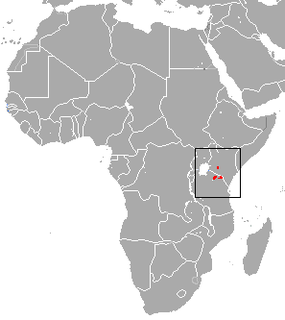 W
WThe East African highland shrew is a species of mammal in the family Soricidae. It is found in Kenya and Tanzania. Its natural habitats are subtropical or tropical moist montane forests, subtropical or tropical high-altitude grassland, and swamps.
 W
WThe Elgon shrew is a species of mammal in the family Soricidae. It is found in Kenya and Tanzania. Its natural habitat is subtropical or tropical moist montane forests.
 W
WEmin's pouched rat (Cricetomys emini), also known as the African pouched rat, is a large rat of the muroid superfamily. It is related to Cricetomys gambianus, the Gambian pouched rat. Both species belong to Cricetomys, the genus of the giant pouched rats.
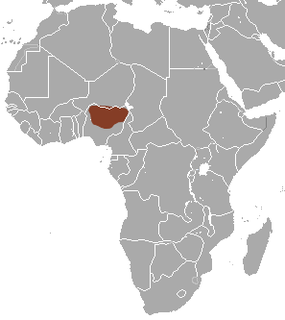 W
WThe flat-headed shrew is a species of mammal in the family Soricidae. It is found in Democratic Republic of the Congo, Ethiopia, Nigeria, and Uganda. The flat-headed shrew is listed as Data Deficient (DD), inadequate information to make a direct, or indirect, assessment of its risk of extinction, on the IUCN Red List of Threatened Species.
 W
WThe greater nectar bat or greater dawn bat is a species of megabat within the genus Eonycteris. It is found in Brunei, Indonesia, Malaysia, and the Philippines. Its range is limited and includes Luzon to Maripipi in the Philippines and scattered parts of Borneo including Tuaran and Ranau in Sabah; Bau, Kuching and Bintulu in Sarawak.
 W
WThe Guyanan red howler is a species of howler monkey, a type of New World monkey, native to Suriname, Guyana, Trinidad, French Guiana, Venezuela and Brazil.
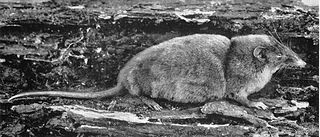 W
WThe hero shrew, also known as the armored shrew, is a large shrew native to the Congo Basin of Africa. Its features are typical of a white-toothed shrew − short legs, slender snout, dense fur − except for a highly unusual spinal column. It has corrugated interlocking vertebrae that are unique among mammals except for its sister species, Thor's hero shrew. This unique adaptation allows the animal to bear a huge amount of weight on its back − 72 kg (159 lb) according to an expedition team.
 W
WThe Iberian shrew or Lagranja shrew is a species of mammal in the family Soricidae. It is found in Portugal and Spain.
 W
WThe Juruá red howler is a species of howler monkey, native to Peru and Brazil.
 W
WThe Kilimanjaro shrew is a species of mammal in the family Soricidae. It is found in Kenya and Tanzania.
 W
WThe King African mole-rat, King mole-rat, or Alpine mole-rat, is a burrowing rodent in the genus Tachyoryctes of family Spalacidae. It only occurs high on Mount Kenya, where it is common. Originally described as a separate species related to Aberdare Mountains African mole-rat, in 1910, some classify it as the same species as the East African mole-rat,.
 W
WThe lesser tube-nosed bat is a species of megabat in the family Pteropodidae. It is native to two of the Maluku Islands in northern Indonesia.
 W
WThe Mindanao shrew is a species of mammal in the family Soricidae. It is endemic to the Philippines. Its natural habitat is subtropical or tropical dry forests. It is threatened by habitat loss.
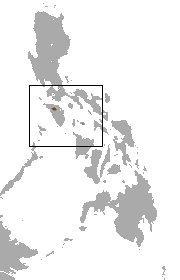 W
WThe Mindoro shrew is a species of mammal in the family Soricidae. It is endemic to the Philippines. It is threatened by habitat loss.
 W
WThe moonshine shrew is a species of mammal in the family Soricidae. It is found in Angola, Burundi, Democratic Republic of the Congo, Kenya, Malawi, Mozambique, Rwanda, Tanzania, Uganda, Zambia, and Zimbabwe. Its natural habitat is subtropical or tropical moist montane forests.
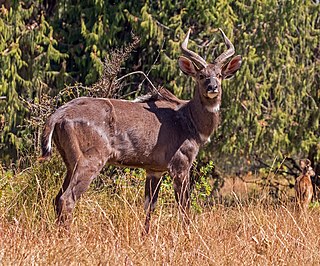 W
WThe mountain nyala or balbok is an antelope found in high altitude woodland in a small part of central Ethiopia. It is a monotypic species first described by English naturalist Richard Lydekker in 1910. The males are typically 120–135 cm (47–53 in) tall while females stand 90–100 cm (35–39 in) at the shoulder. Males weigh 180–300 kg (400–660 lb) and females weigh 150–200 kg (330–440 lb). The coat is grey to brown, marked with two to five poorly defined white strips extending from the back to the underside, and a row of six to ten white spots. White markings are present on the face, throat and legs as well. Males have a short dark erect crest, about 10 cm (3.9 in) high, running along the middle of the back. Only males possess horns.
 W
WThe reddish-gray mouse lemur also known as the gray-brown mouse lemur or rufous-gray mouse lemur, is found in Western Madagascar in the region around Beza Mahafaly Reserve, north to Lamboharana.
 W
WRobinson's banded langur, also known as Robinson's banded surili, is a species of monkey in the family Cercopithecidae. It was formerly considered a subspecies of the Raffles' banded langur Presbytis femoralis, but genetic analysis revealed that it is no more related to Raffles' banded langur than it is to several other Presbytis species. It lives in the northern Malay Peninsula, including southern Burma and Thailand. It is listed as near threatened by the IUCN.
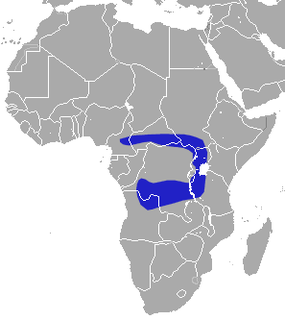 W
WRoosevelt's shrew is a species of mammal in the family Soricidae. It is found in Angola, Cameroon, Central African Republic, Democratic Republic of the Congo, Rwanda, Tanzania, and Uganda. Its natural habitat is moist savanna.
 W
WThe round-eared tube-nosed fruit bat is a species of bat in the family Pteropodidae. It is possibly conspecific with Nyctimene certans, although the taxonomy remains unresolved. The possible synonymy of the species was investigated by Randolph L. Peterson in 1991, finding the species split into two distinct groups based on morphology. It is found in West Papua and Mansuar Island in Indonesia.
 W
WThe short-palated fruit bat is a species of frugivorous megabat in the family Pteropodidae. It is found in Cameroon, Central African Republic, and Democratic Republic of the Congo. Its natural habitat is subtropical or tropical moist lowland forests. Births occur in May.
 W
WThe small-footed shrew is a species of mammal in the family Soricidae. It is found in Angola, Burundi, Cameroon, Central African Republic, Chad, Democratic Republic of the Congo, Ethiopia, Kenya, Nigeria, Rwanda, South Sudan, Tanzania, Uganda, and Zambia. Its natural habitats are subtropical or tropical moist lowland forest, subtropical or tropical dry shrubland, and subtropical or tropical moist shrubland.
 W
WThe turbo shrew is a species of mammal in the family Soricidae. It is found in Angola, Burundi, Cameroon, Central African Republic, Republic of the Congo, Democratic Republic of the Congo, Equatorial Guinea, Gabon, Kenya, Malawi, Rwanda, South Sudan, Tanzania, Uganda, and Zambia. Its natural habitats are subtropical or tropical moist lowland forest and subtropical or tropical moist montane forest.
 W
WThe Ugandan musk shrew is a species of mammal in the family Soricidae. It is found in Uganda, the Democratic Republic of Congo and the Central African Republic. Its range, population size and habits are poorly known.
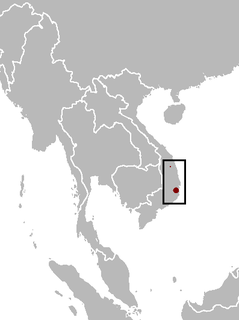 W
WThe Vietnam mouse-deer, also known as the silver-backed chevrotain, is an even-toed ungulate in the family Tragulidae known only from Vietnam. It was first described in 1910 by British zoologist Oldfield Thomas, who procured four specimens from Nha Trang in Annam. Little is known about its distribution and ecology. After 1910, the Vietnam mouse-deer was reported next in 1990 near Dak Rong and Buon Luoi in the Gia Lai Province. With increasing hunting pressure, habitat loss due to deforestation and no more reports of the species in the wild, the mouse-deer was feared to have gone extinct. The IUCN listed the species as Data Deficient in 2008. In 2019, a study confirmed the presence of the Vietnam mouse-deer in dry low-lying forests of southern Vietnam with camera trap evidence. The mouse-deer is characterised by a rough coat with a strange double-tone coloration unseen in other chevrotains; the front part of the body is reddish brown and contrasts strongly with the greyish posterior. It has big reddish brown ears, white and dark reddish brown marks on the throat.
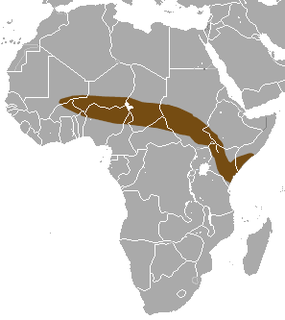 W
WThe Voi shrew is a species of mammal in the family Soricidae. It is found in Benin, Burkina Faso, Cameroon, Central African Republic, Chad, Ethiopia, Ghana, Kenya, Mali, Niger, Nigeria, Somalia, Sudan, and Togo. Its natural habitat is dry savanna.
 W
WXanthippe's shrew is a species of mammal in the family Soricidae. It is found in Kenya and Tanzania. Its natural habitats are dry savanna and subtropical or tropical dry shrubland.